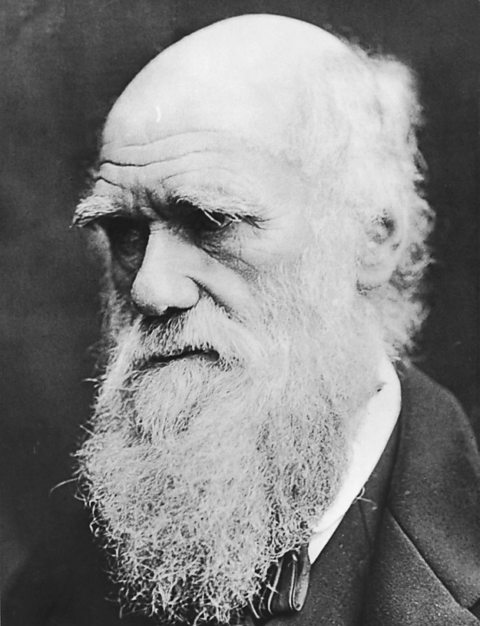Darwin's theory of evolution

Charles DarwinAn English naturalist (1809-1882). In 1859 Darwin published On the Origin of Species, which outlined his theory of evolution. was an English naturalist who studied variation in plants, animals and fossils during a five-year voyage around the world in the 19th century. Darwin visited four continents on the ship HMS Beagle.
Darwin observed many organismLiving entity, eg animals, plants or microorganisms. including finches, tortoises and mocking birds, during his five week visit to the Galapágos IslandsIslands in the Pacific Ocean, visited by Charles Darwin., near Ecuador in the Pacific Ocean. He continued to work and develop his ideas once he returned from his voyages.
Darwin's theory of evolutionThe process of change in the inherited traits of a population of organisms from one generation to the next. challenged the idea that God made all the animals and plants that live on Earth, which contradicted the commonly held Christian views of his era. He did not publish his scientific work and ideas until 28 years after his voyage.
Finally, as a result of Darwin's world expedition and observations, which were backed by many years of experimentation; his discussions with like-minded scientists and his developing knowledge of geology and fossils; he proposed the theory of evolution by natural selectionThe natural process whereby the best-adapted individuals survive longer, have more offspring and thereby spread their characteristics. Sometimes referred to as 'survival of the fittest'..
Darwin proposed that:
- individual organisms within a particular speciesA type of organism that is the basic unit of classification. Individuals of different species are not able to interbreed successfully. show a wide range of variation for a characteristic
- individuals with characteristics most suited to the environment are more likely to survive and to breed successfully
- the characteristics that have enabled these individuals to survive are then passed on to the next generation
This theory is called natural selection.